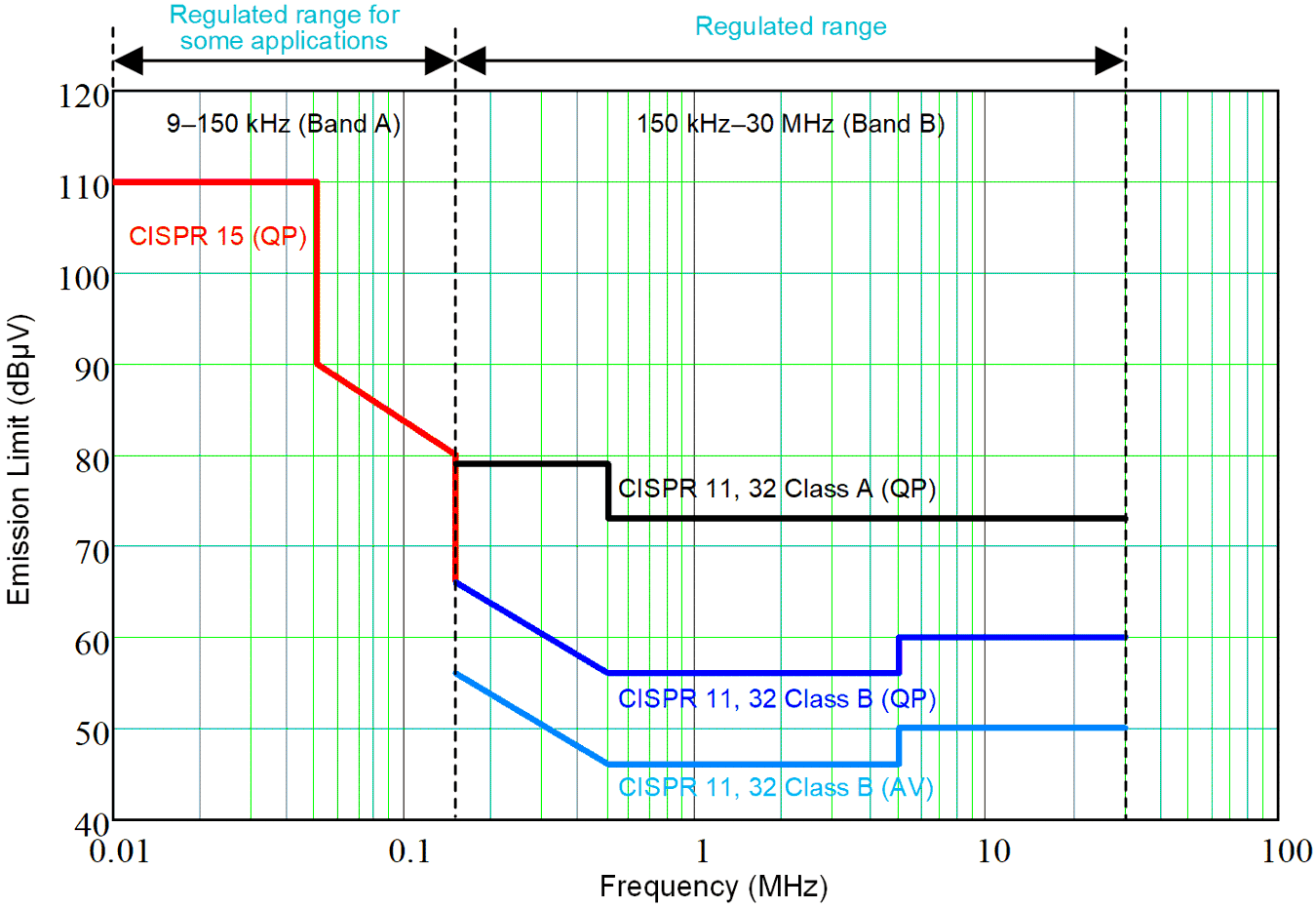SLVAFJ9 March 2023 TPSF12C1 , TPSF12C1-Q1 , TPSF12C3 , TPSF12C3-Q1
- Abstract
- 1 Table of Contents
- Trademarks
- 2 Introduction
- 3 EMI Frequency Ranges
- 4 Passive EMI Filters for High-Power, Grid-Tied Applications
- 5 Active EMI Filters
- 6 Generalized AEF Circuits
- 7 Selection of the CM Active Filter Circuit
- 8 The Concept of Capacitive Amplification
- 9 Practical AEF Implementations
- 10Practical Results
- 11Summary
- 12References
3 EMI Frequency Ranges
High-frequency switching networks are essential components for energy conversion in switched-mode AC/DC regulators. Yet these switching networks are also inherent sources of input current harmonics and conducted EMI that can affect the normal operation of adjacent equipment sharing the same grid-connected input source.
Figure 3-1 depicts the harmonic and conducted EMI frequency ranges classified by electromagnetic compatibility (EMC) standards organizations, such as the International Electrotechnical Commission (IEC) and Comité International Spécial des Perturbations Radioélectriques (CISPR).
Applying PFC techniques enables input current harmonics to meet limits set by IEC 61000-3-2/-12 at frequencies up to 2 kHz. EMI filters are still mandatory, however, in order to attenuate high-frequency noise currents and meet conducted emissions specifications (such as CISPR 11 for industrial and CISPR 25 for automotive applications) within classified frequency ranges beginning at 150 kHz [1], as illustrated in Figure 3-2.
 Figure 3-2 CISPR Quasi-Peak and Average
Limits in the Frequency Range of 9 kHz to 30 MHz
Figure 3-2 CISPR Quasi-Peak and Average
Limits in the Frequency Range of 9 kHz to 30 MHzAs Figure 3-2 indicates, only the CISPR 14-1 and CISPR 15 product standards – for household appliances and lighting applications, respectively – presently specify emissions limits as low as 9 kHz. However, with standardization activities ongoing, the forthcoming inclusion of the 9- to 150-kHz band and applicable emissions limits to the existing IEC 61000-6-3 generic EMI standard [1-2] will surely affect the future design of EMI filters for attenuation below 150 kHz. EMI mitigation across wide frequency ranges require correspondingly larger passive components.